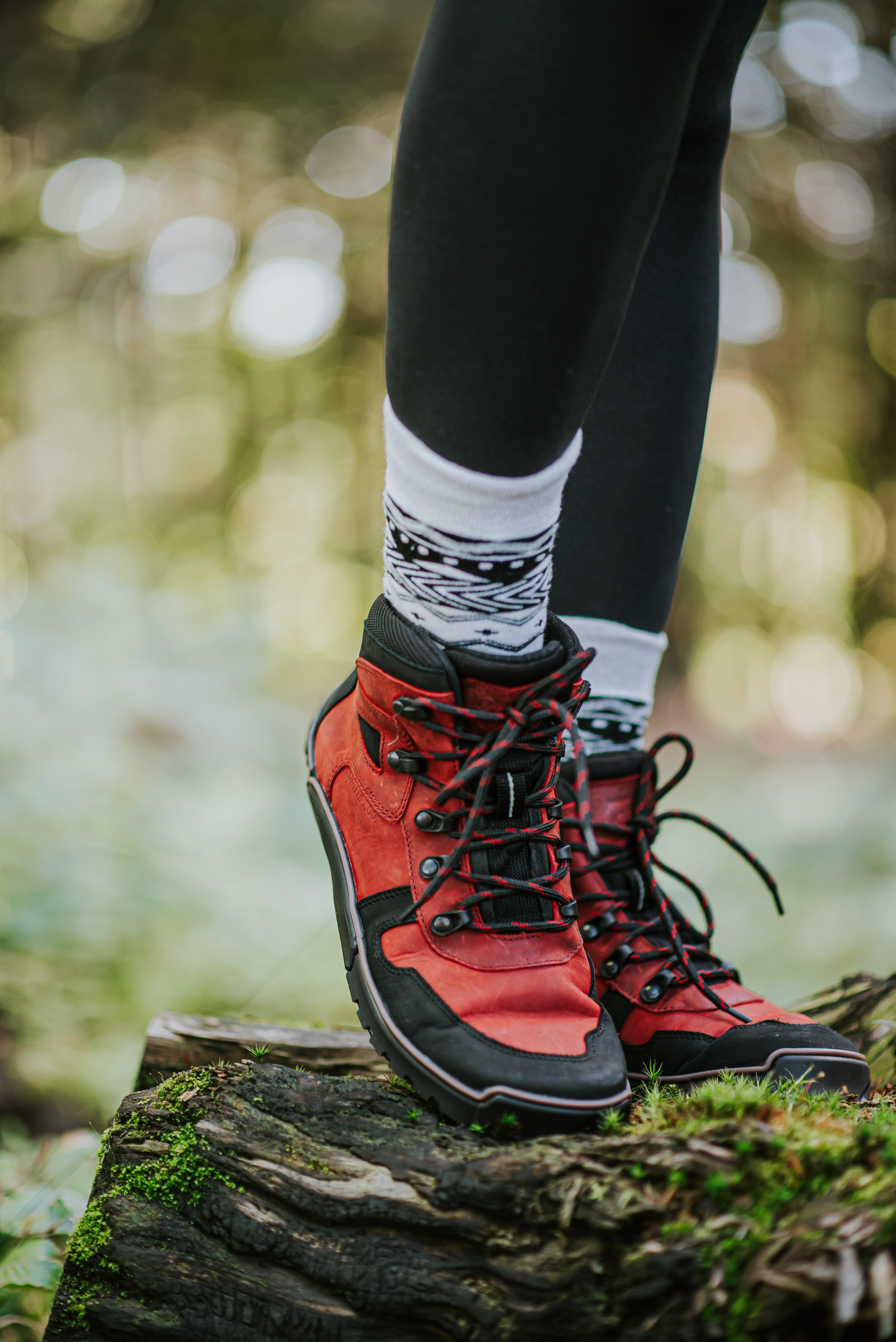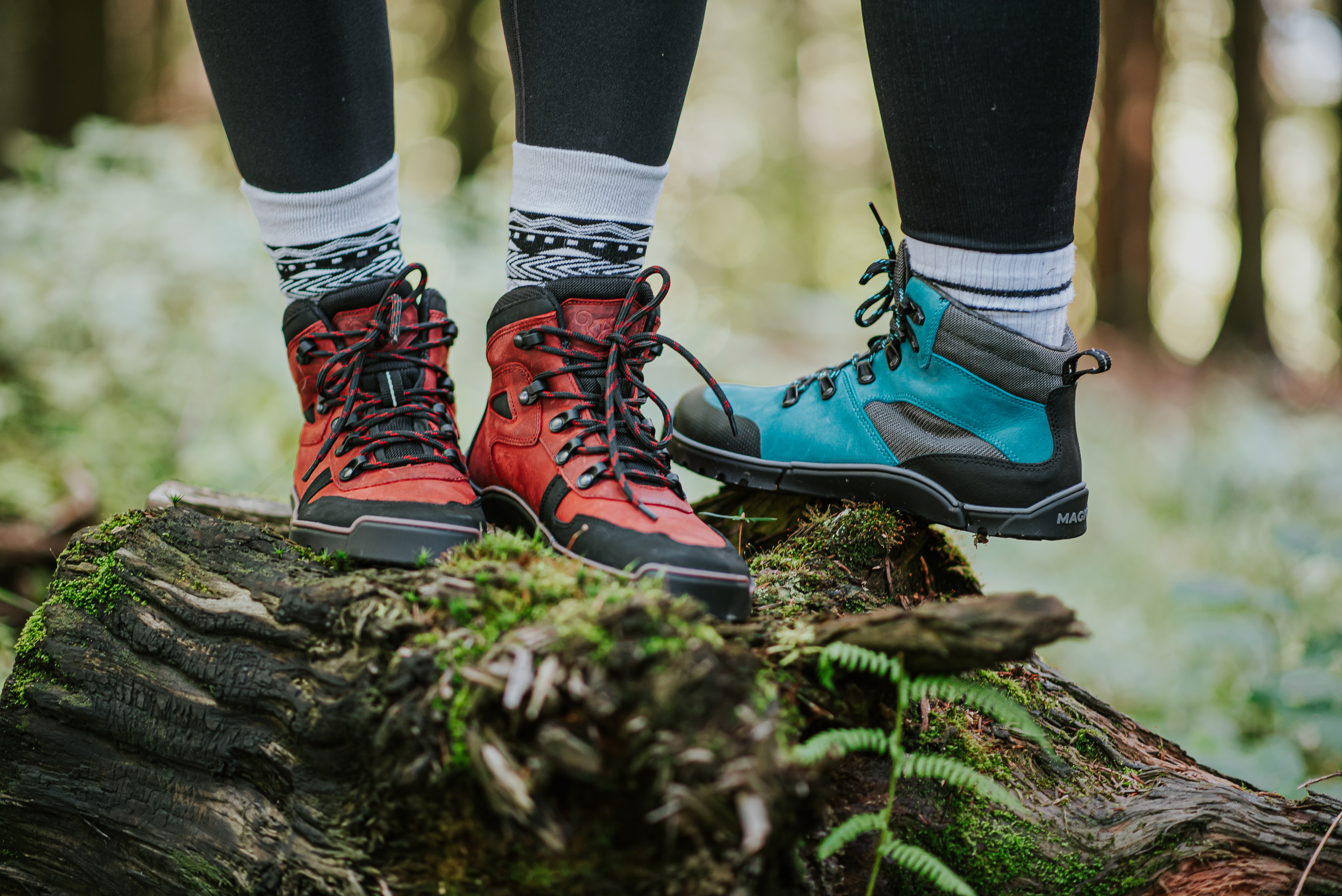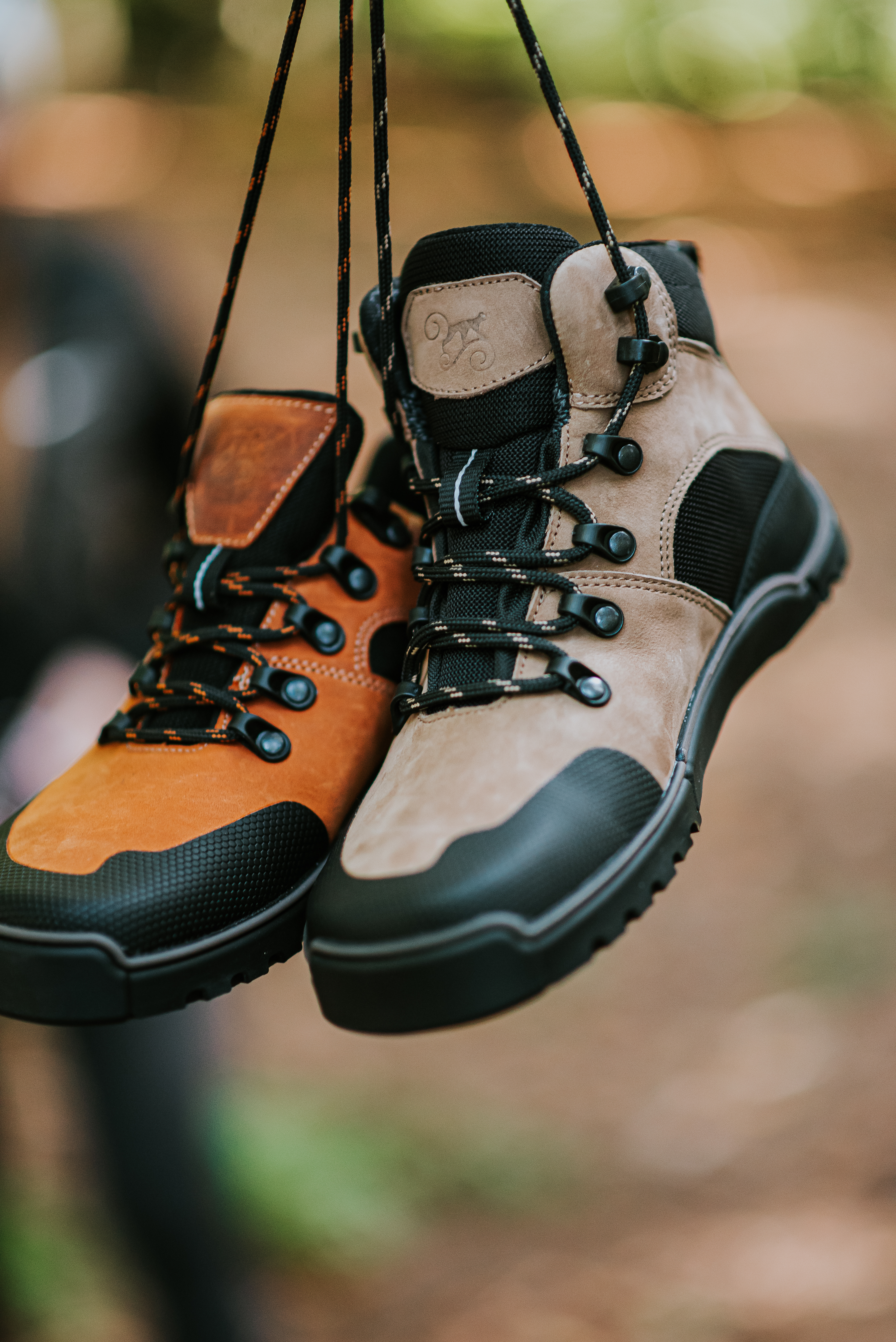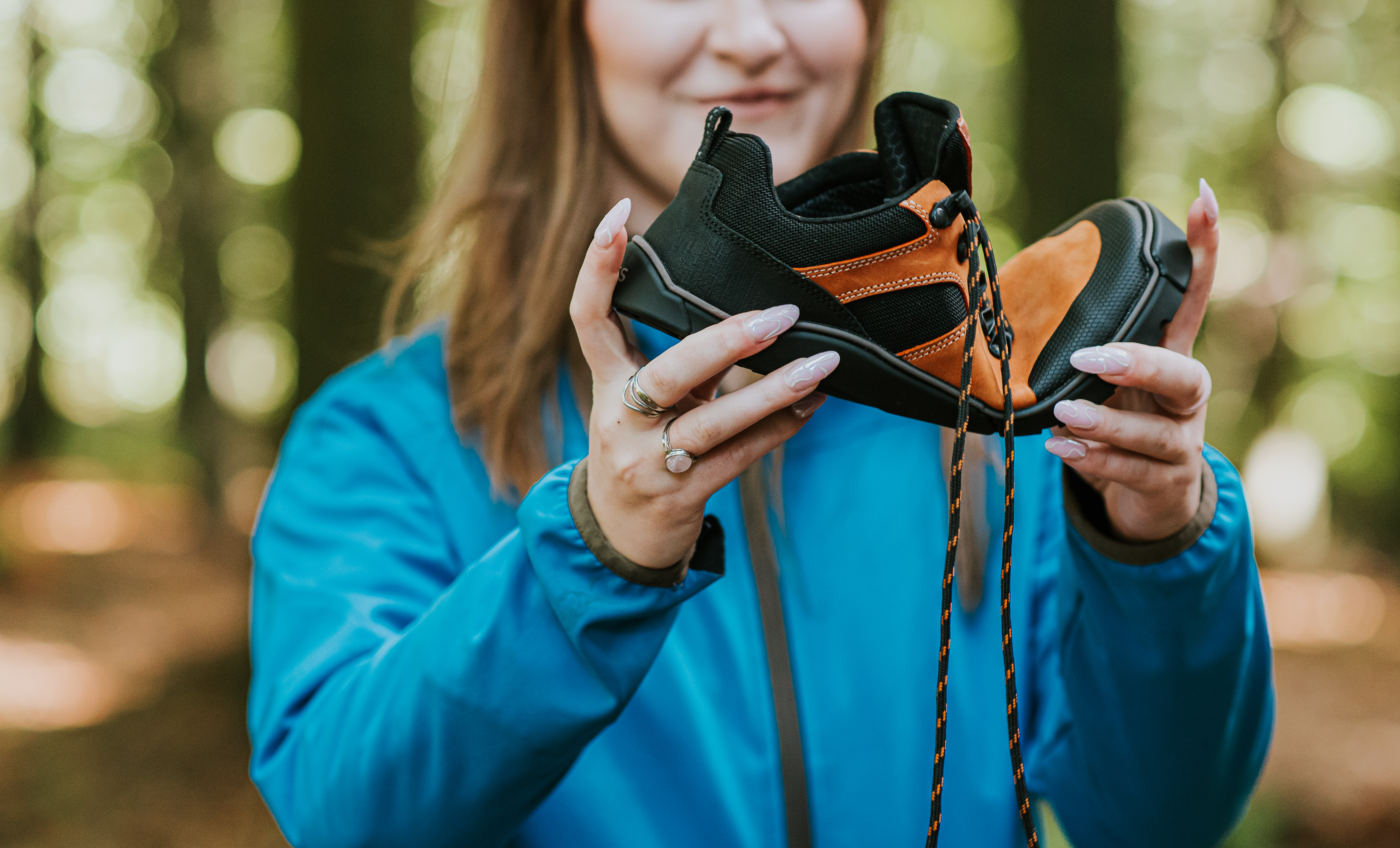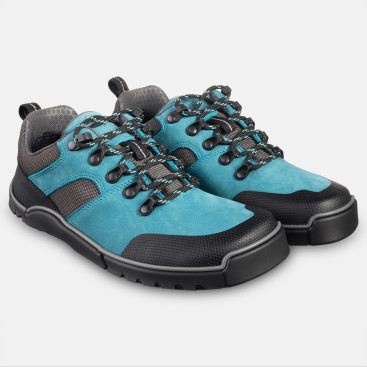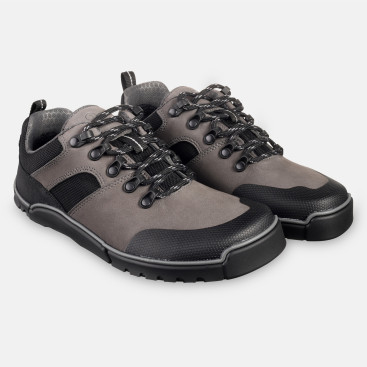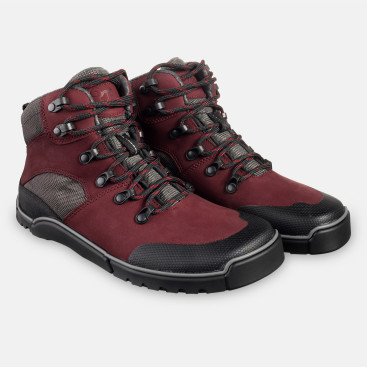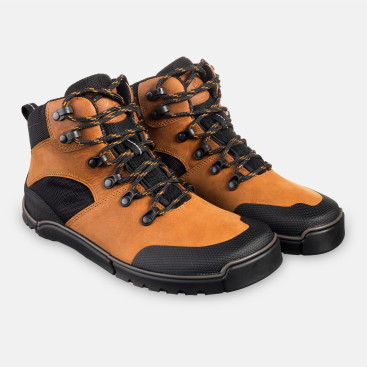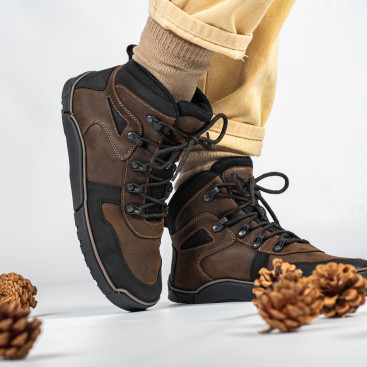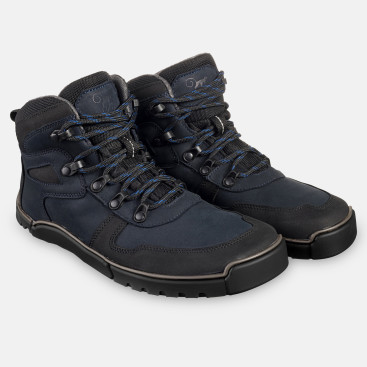Where did the idea of barefoot hiking come from?
It comes from this very reflection – the barefoot approach assumes a return to the most fundamental form of movement: walking as nature intended. It is not a trend or a temporary alternative but a philosophy based on the belief that human feet – if given space and freedom – are perfectly adapted to handle varied terrain. In the world of hiking, this approach has gained popularity among those seeking greater contact with the ground, more conscious movement, and deeper involvement of the whole body while walking.
Barefoot footwear differs from traditional models in almost every aspect. The sole is flexible yet thick enough to handle protruding rocks. It is completely flat – with no raised heel, no arch support, and no cushioning. The toes have full freedom thanks to the wide toe box, and the whole shoe is lightweight, breathable, and free from rigid elements. All this allows the foot to move more naturally – to bend, flex, and adapt to the terrain with every step.
What makes barefoot shoes stand out on the trail?
Although at first glance such minimalist footwear might seem unsuitable for demanding routes, the reality can be surprising. They contain the same number and thickness of materials as similar “normal” hiking shoes but without unnecessary stiffening. They also allow for better ground feel, making it easier to avoid hazards. The body’s response becomes more dynamic – every movement is conscious, and the foot actively works on every section of the path.
The sense of artificial separation from nature also disappears. In barefoot shoes, the ground becomes not just something you walk on, but part of the experience itself. Soft grass, rough rock, uneven roots – all of these translate into genuine sensory impressions that restore the primal joy of movement. This form of hiking requires greater engagement but, in return, provides more control, stability, and connection with the body.
